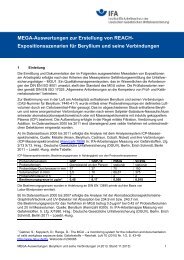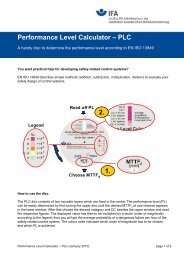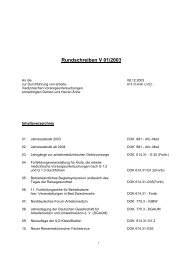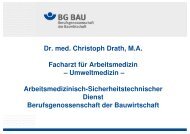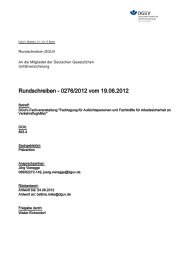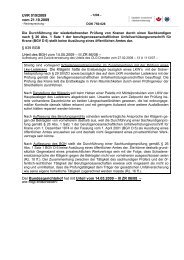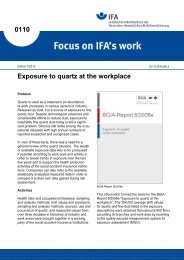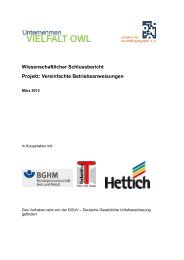Effectiveness of measures to prevent needlestick injuries among ...
Effectiveness of measures to prevent needlestick injuries among ...
Effectiveness of measures to prevent needlestick injuries among ...
You also want an ePaper? Increase the reach of your titles
YUMPU automatically turns print PDFs into web optimized ePapers that Google loves.
1 Introduction<br />
1 Introduction<br />
Although the extent <strong>of</strong> tissue damage <strong>to</strong> health care workers injured while using sharp<br />
medical equipment, especially needles and intravenous (IV) equipment, is generally<br />
minor, a more serious problem, and the impetus behind the development <strong>of</strong> needle-<br />
stick injury (NSI) <strong>prevent</strong>ion programs, arises from the risk <strong>of</strong> infection by blood-borne<br />
pathogens subsequent <strong>to</strong> NSI. The pathogens <strong>of</strong> greatest concern that may be trans-<br />
mitted by NSI are hepatitis B (HBV), hepatitis C (HCV), and human immunodeficiency<br />
virus (HIV). While other blood borne pathogens (BBP), including, for example, Hepati-<br />
tis G; Herpes Simplex 1; Group A Strep<strong>to</strong>coccus; and Human Parvovirus B19 may also<br />
be transmitted by NSI, they are less common [1 <strong>to</strong> 7]. Because <strong>of</strong> these potentially<br />
serious consequences <strong>of</strong> NSI, ongoing surveillance and tracking <strong>of</strong> <strong>injuries</strong> and any<br />
subsequent infections are crucial for identifying high-risk groups or activities, and<br />
for planning health care services for health care workers (HCW) who may become<br />
infected.<br />
In the United States <strong>of</strong> America (USA), the growth <strong>of</strong> NSI <strong>prevent</strong>ion programs corre-<br />
lated with the growth <strong>of</strong> awareness <strong>of</strong> the HIV epidemic in the mid-1980s [8]. The<br />
United States Centers for Disease Control and Prevention (CDC) issued its first set <strong>of</strong><br />
guidelines on <strong>needlestick</strong> safety in 1983; the revised version, issued in 1987, became<br />
the so-called “Universal Precautions” in which health care and emergency services<br />
providers were instructed <strong>to</strong> treat all body fluids as if they were infective [8; 9]. The<br />
Occupational Safety and Health Administration (OSHA) lagged several years behind<br />
CDC in recognizing the risks associated with NSI, issuing the first blood borne patho-<br />
gens (BBP) standard in 1991. These regulations were designed <strong>to</strong> protect health care<br />
workers from risks <strong>of</strong> occupational exposure <strong>to</strong> BBP by investing employers with the<br />
responsibility <strong>of</strong> evaluating the effectiveness <strong>of</strong> existing risk control <strong>measures</strong>, and <strong>of</strong><br />
identifying and evaluating new technologies that might prove <strong>to</strong> be more effective at<br />
reducing the risk <strong>of</strong> NSI occurrence [10]. The 1999 version <strong>of</strong> the OSHA BBP standard<br />
reiterated and emphasized employers’ responsibility <strong>to</strong> review the efficacy <strong>of</strong> their in-<br />
fection control plans annually, <strong>to</strong> keep informed about newly developed engineering<br />
controls, and <strong>to</strong> use the most advanced system that could be feasibly adopted by their<br />
institution [10]. In parallel with the implementation <strong>of</strong> increasingly specific regula<strong>to</strong>ry<br />
Report „Needlestick <strong>injuries</strong>“ 13





